Today's perspective of paradise is from the topmost hill in the town, not from sea level as usual. You can just vaguely see the ocean in the distance, which makes up part of the southernmost shoreline of Africa, though the winter afternoon mist has shrouded the shore and smudged the details of a usually crisp vista.
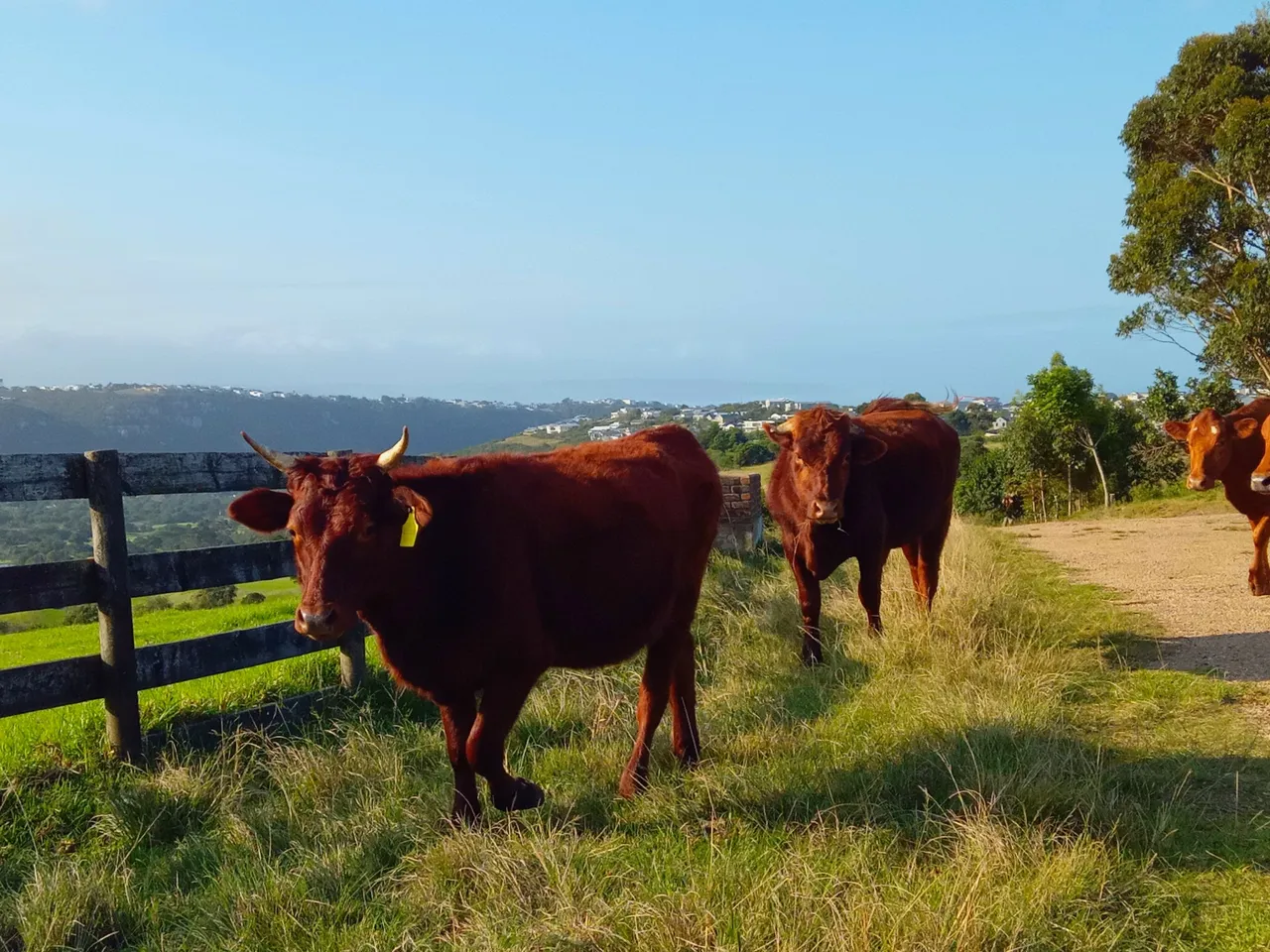
This setting happens to be the farm of a wealthy land owner who has his cows herded past here in the afternoon. I managed, by chance, to be at the right place at the right time to capture some intimate and close-up impressions of the small herd of small cows and bullocks as they passed on the hilltop.
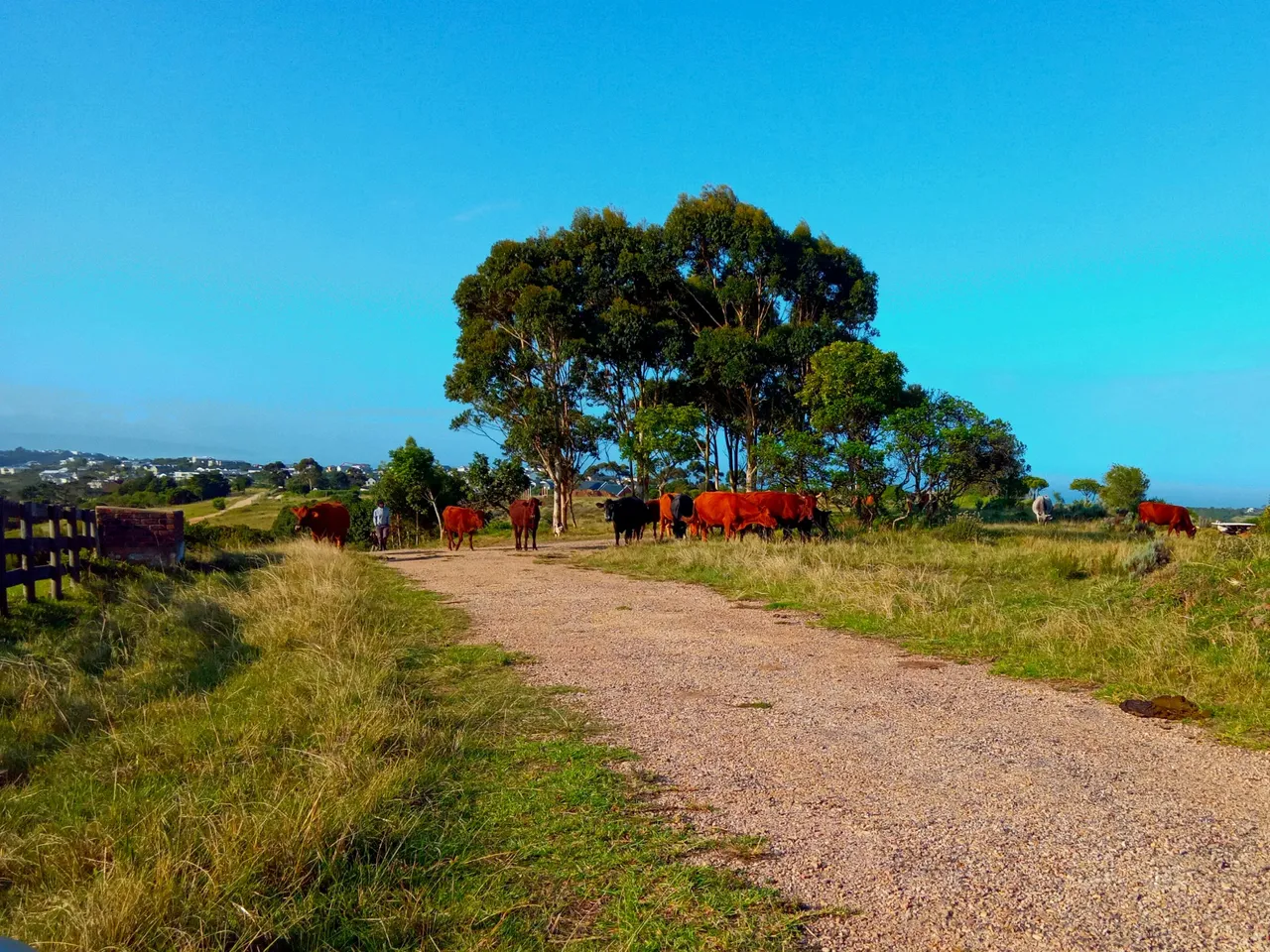
With its 360 degree view, it's another of the secret hidden vantage points for those who know their way around this small seaside holiday town. Very few people come here, so I like to come and bask in the winter afternoon sun and meditate on the bird's eye view of life.
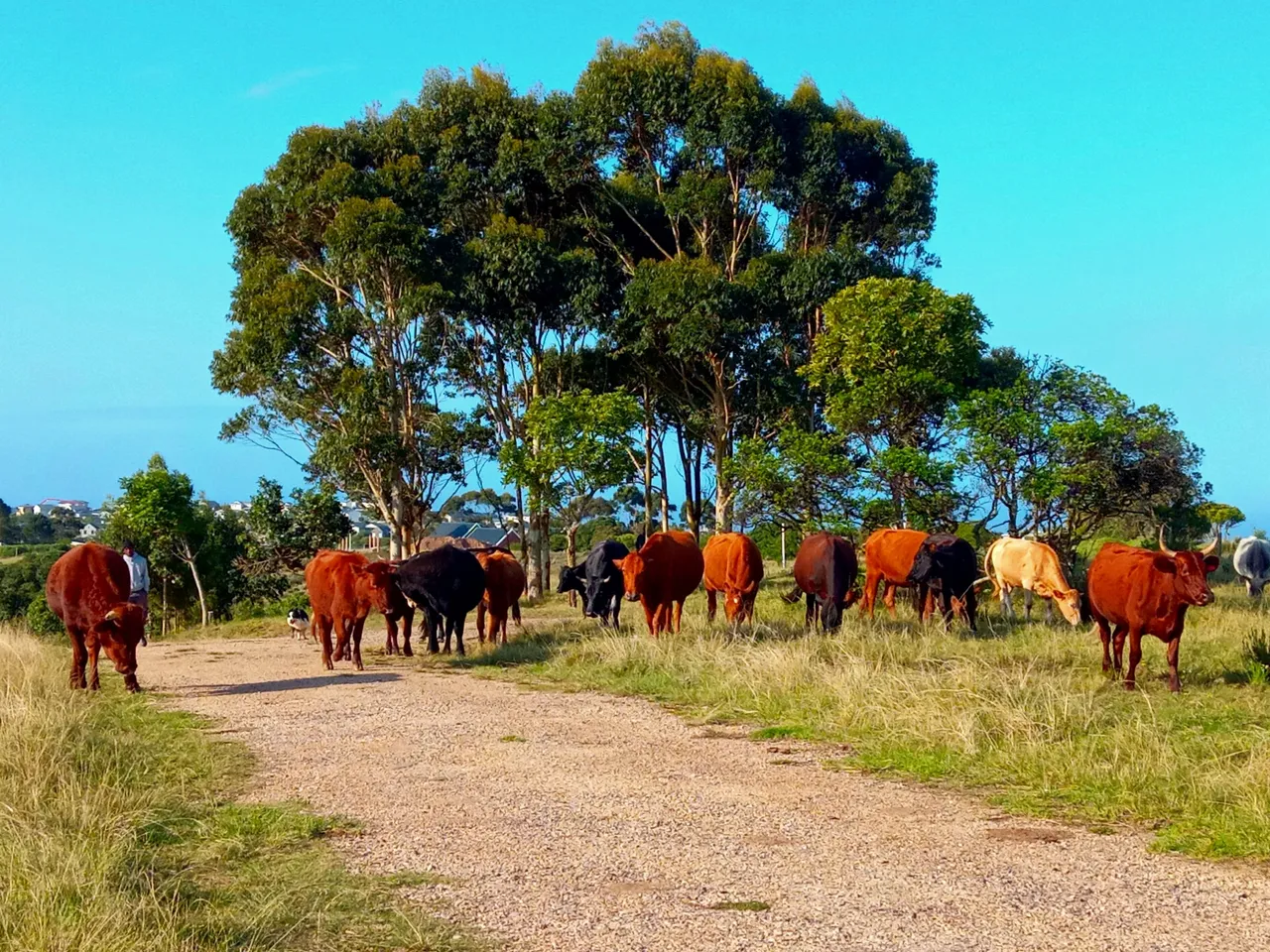
Problems seem smaller from here with this broader perspective of the surroundings. It allows me to see any mountain of a challenge as nothing more than a molehill. Zooming out and seeing the bigger picture really helps me observe the mind and how it gets overly stressed, perhaps due to earlier conditioning.

I feel quite blessed today to have the chance to bathe in the dust of the passing cows as they surround me on the path. In the refined and civilized culture of ancient India, the cow is considered to be one of our mothers, mainly because she feeds us with her milk and other dairy products, like ghee, which is so crucial for temple ceremonies, yajna and puja (worship of the gods). Ghee, like honey, is a magical foodstuff that preserves indefinitely potentially. It also has medicinal or healing uses. And it comes from the cow.
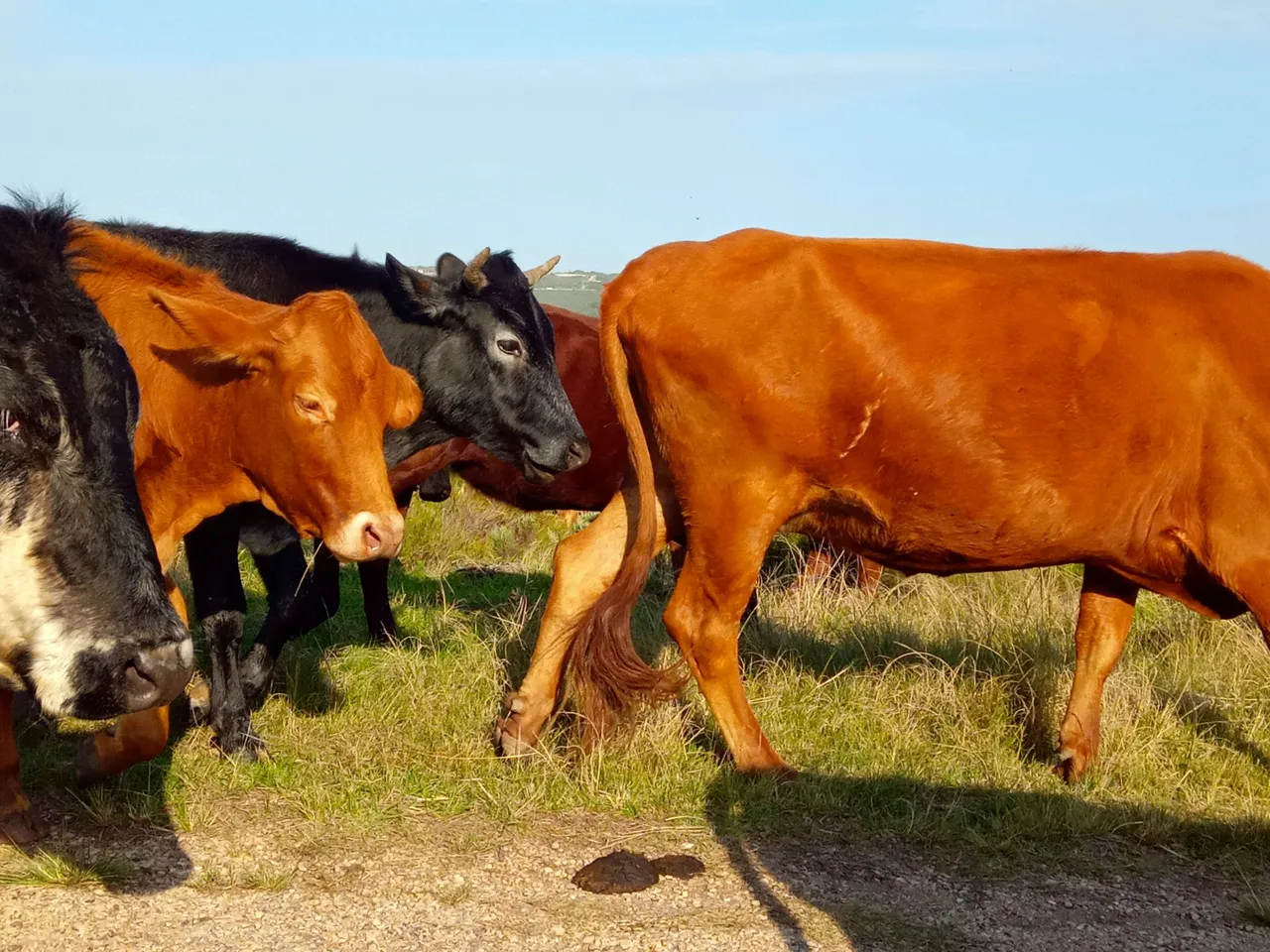
In the current age of electricity, we forget how valuable this ghee or butter fat might have been during an earlier time in history, where it was the key source of lamp oil for light at night. In these ways, the cow's milk provided more than perhaps any other animal to humanity for our wellbeing. And we don't need to kill the cow to benefit.

Conversely, she is respected so highly that she is seen as one of our mothers. Even her dung is considered purifying and antiseptic. Dried cow dung makes an efficient fuel for a cooking fire. Both here in my homeland of Africa, as well as throughout India, the cow is a valuable source of energy; but only in India is the cow given the respect she deserves, that of a mother. Also the bull is equally respected and protected, unlike in the west.
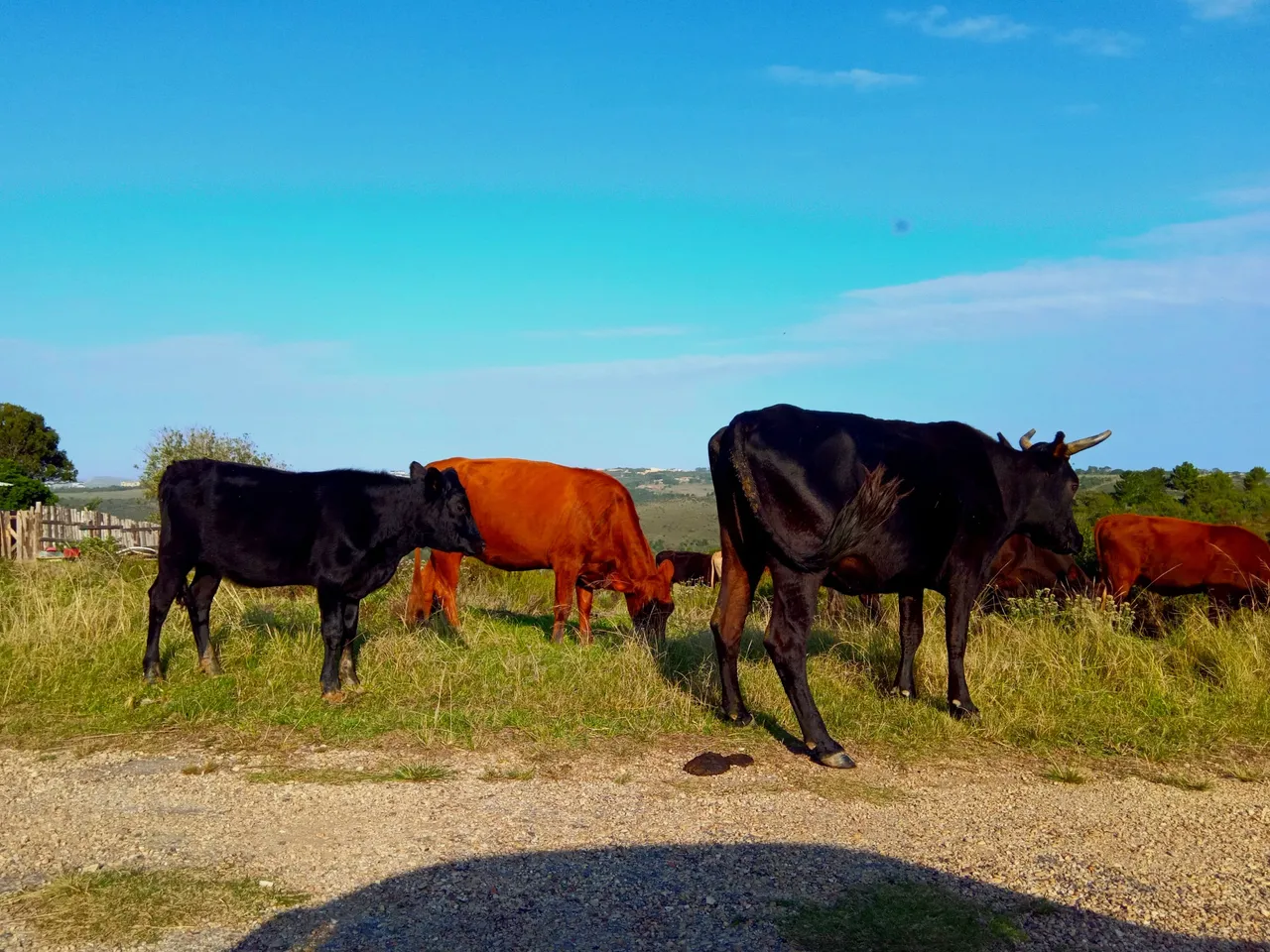
The other mothers include our biological mother of course, and also mother Earth, also known as Gaia, or Bhumi Devi in the ancient Sanskrit Veda texts. As the mother, the cow is never mistreated, but rather given respect and protection. This respect actually extends to all animals, and thus a vegetarian diet is the result. This is based upon one of the core teachings of Buddhism and Sanatana Dharma (Hinduism) or yoga practice, called "ahimsa" or non-violence.

Life is sacred, especially that of the mothers of civilization because from them all of us are born. The womb is the sacred chalice, the vessel or crucible that births all life. Women are thus all potentially mothers and all inherently sacred temples from which all life springs. Today seeing these cows so close up - for a suburban resident like me - reminded me of just how conscious and sentient they are as sensitive, warm blooded mothers. And how little difference there is between them and me. It's a valuable perspective to have, one which we in the modern western world need to be reminded of sometimes.
Photos my own. Written and published via my mobile device, uploaded onto the Hive blockchain.